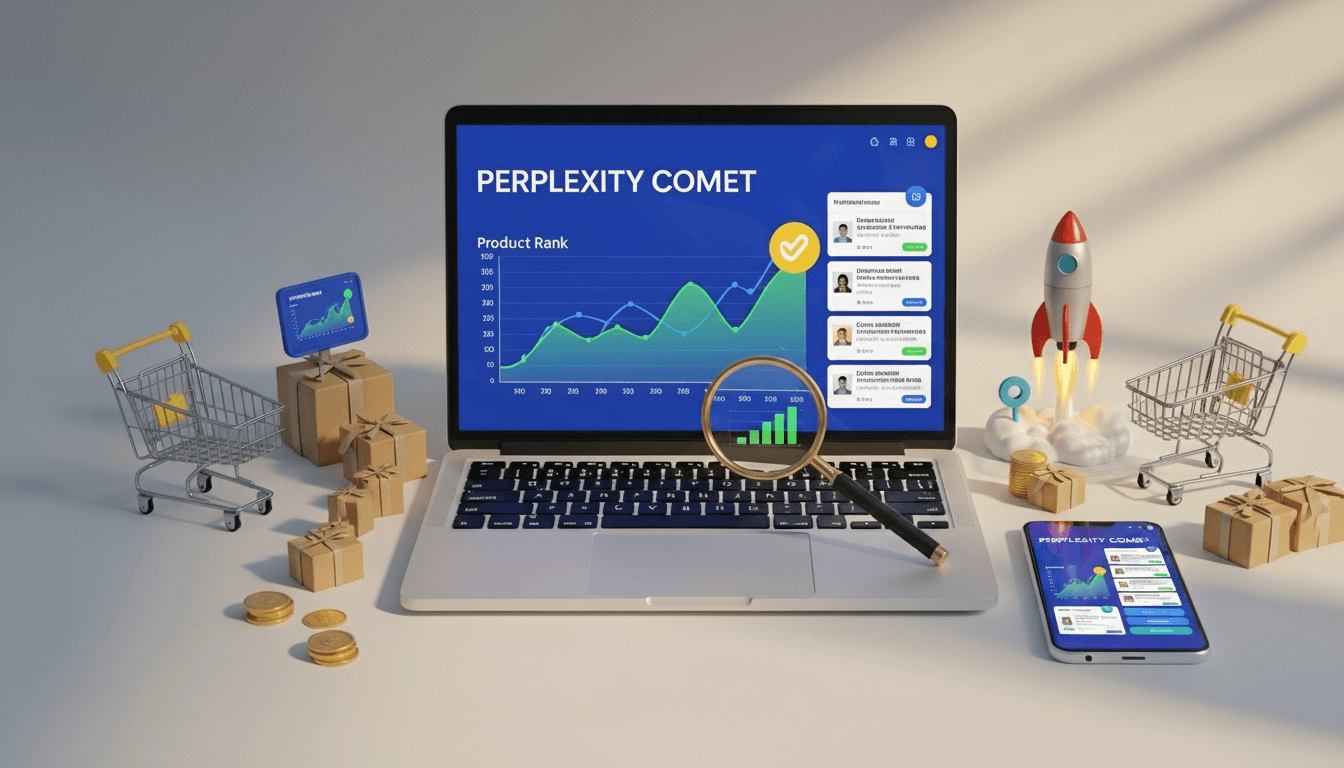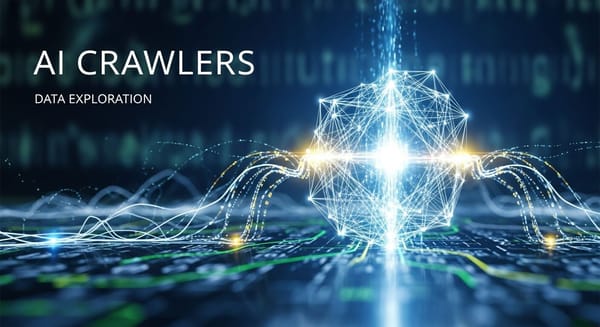Generative Engine Optimization Guide for Ecommerce Sites | Outrank AI Search and Scale Your Products

Imagine searching for the best way to boost your products online presence, only to find AI-powered tools like ChatGPT or Google’s AI Overviews delivering instant, tailored answers without ever clicking a link. This is the future of search, and it’s happening now.
As AI transforms search engines into "answer engines," a new strategy called Generative Engine Optimization (GEO) is redefining how businesses stay visible in 2025.
This guide dives deep into e-commerce GEO, offering practical insights, strategies, and tools specifically for Shopify, WooCommerce, and BigCommerce stores to navigate this AI-driven shopping landscape.
What is Ecommerce Generative Engine Optimization (GEO)?
Generative Engine Optimization (GEO) for e-commerce is the practice of optimizing product catalogs, product data, and store content to increase the likelihood of your products being sourced, cited, and featured in AI-driven shopping recommendations.
Unlike traditional product SEO, which focuses on ranking product pages in search engine results pages (SERPs), e-commerce GEO ensures your products are interpreted, understood, and accurately recommended by AI shopping systems like ChatGPT, Perplexity, Gemini, Copilot, Claude, and Google's AI Overviews.
The Critical Difference for Online Retailers:
Traditional Product SEO:
- Optimizes product pages to rank for keywords like "wireless headphones"
- Drives shoppers to your store from Google search results
- Focuses on getting clicks to product pages
E-commerce GEO:
- Optimizes product data so AI shopping assistants recommend your specific products
- Gets your products featured when shoppers ask "What are the best wireless headphones for travel?"
- Focuses on getting product citations and recommendations in AI responses
What are the Core Principles of E-commerce Generative Engine Optimization
1. Understand Shopping Intent
Address shopper queries with conversational, product-focused content using long-tail shopping keywords.
Examples:
- Generic: "wireless headphones"
- Shopping Intent: "best wireless headphones for airplane travel with noise cancellation"
- Generic: "office chair"
- Shopping Intent: "ergonomic office chair for back pain under $500"
2. Meet E-E-A-T Standards for Product Content
Experience: Share firsthand product knowledge and real customer experiences
- Include actual product testing results
- Feature customer reviews and use cases
- Show product photos from real customers
- Demonstrate products in actual use scenarios
Expertise: Provide well-researched, accurate product information
- Detailed technical specifications
- Product comparison data
- Category expertise and buying guides
- Industry knowledge about product categories
Authoritativeness: Reference credible product sources and experts
- Manufacturer specifications
- Third-party product testing results
- Industry certifications and awards
- Expert endorsements and reviews
Trustworthiness: Maintain transparency and ethical product practices
- Accurate pricing and availability
- Clear return and warranty policies
- Honest product pros and cons
- Verified customer reviews
Why is E-commerce GEO Critical for Online Retailers?
The rise of AI-driven product discovery has reshaped shopping behavior and the e-commerce landscape, making GEO critical for product visibility. Key drivers include:
Shifting Shopping Landscape
AI shopping engines aggregate product data into cohesive recommendations, reducing reliance on traditional link-based product search results.
The Impact on E-commerce:
- Gartner predicts a 25% drop in traditional search volume by 2026 and 50% by 2028 due to AI chatbots
- 67% of shoppers now use AI assistants to research products before purchasing
- 42% of shoppers prefer ChatGPT over Google for complex product research queries
- 79% of consumers use AI for finding deals and product promotions
Changing Shopper Behavior
Shoppers increasingly rely on AI tools for product research:
- "What's the best standing desk for small apartments?" (ChatGPT)
- "Where can I buy sustainable yoga pants?" (Perplexity)
- "Compare iPhone vs Samsung Galaxy for photography" (Google AI Overview)
- "Show me budget-friendly noise-cancelling headphones" (Claude)
Enhanced Shopping Experience
E-commerce GEO aligns product content with shopping intent, delivering concise, relevant product recommendations in one place, reducing the need for shoppers to navigate multiple store websites.
Increased Product Visibility
Optimized product catalogs are more likely to be cited in AI shopping responses, boosting product reach across ChatGPT, Perplexity, Google AI Overview, and other platforms.
Competitive Advantage
Early GEO adopters in e-commerce can dominate AI-driven product discovery before competitors understand its importance.
Future-Proofing Your Store
E-commerce GEO ensures your product catalog stays visible as AI shopping technologies evolve and traditional search declines.
Brand Authority in Your Category
Accurate product citations in AI responses enhance your store's credibility and trustworthiness as a product source.
If you're interested in Answer Engine Optimization to optimize product visibility in AI search engines, check our E-commerce Answer Engine Optimization guide.
E-commerce GEO vs. Traditional Product SEO
While E-commerce GEO and product SEO share common goals, they differ in focus and execution, forming a complementary strategy for online retailers. Below are tables outlining their similarities and differences.
Similarities Between E-commerce GEO and Product SEO
| Aspect | Description for E-commerce |
|---|---|
| Visibility Goals | Both aim to enhance product discoverability and reach relevant shoppers. |
| Keyword Strategy | Both use strategic shopping keywords to ensure product relevance. |
| User Experience | Both prioritize engaging, accessible product pages for shoppers. |
| Content Quality | Both adhere to E-E-A-T principles for product information trustworthiness. |
| Technical Optimization | Both require fast product page load times, mobile-friendliness, and crawlability. |
| Authority Building | Both rely on credible product content and relationships with authoritative review sources. |
| Continuous Adaptation | Both evolve with changes in algorithms and search technologies. |
Differences Between E-commerce GEO and Product SEO
| Aspect | Product SEO | E-Commerce GEO |
|---|---|---|
| Primary Objective | Rank product pages higher in traditional SERPs to drive organic clicks | Ensure products are recommended in AI-generated shopping responses. |
| Content Focus | Keyword-optimized product descriptions for human readers. | Structured, AI-readable product data for synthesis and recommendations. |
| Response Generation | Displays product link-based results in Google. | Delivers synthesized, direct product recommendations in AI responses. |
| Information Synthesis | Optimizes individual product pages for ranking. | Targets AI integration of product data from multiple sources for comprehensive shopping |
| Algorithm Adaptation | Adapts to Google search engine updates. | Adjusts to AI model preferences for product recommendation criteria. |
| Content Formatting | Optimized for traditional web crawlers (Googlebot). | Uses product schema markup and NLP-friendly formats for AI shopping assistants. |
| User Intent | Matches product keywords to search queries. | Interprets deeper shopping intent (needs, use cases, preferences, budget). |
| Metrics | Tracks product page rankings, CTR, bounce rate, conversions. | Tracks AI product citation frequency, product recommendation prominence, AI-referred sales. |
Why E-commerce GEO and Product SEO Integration Is Crucial
E-commerce GEO builds on product SEO's foundation, creating a holistic product visibility strategy:
Unified Product Content Strategy: Use consistent product descriptions and brand voice for both human shoppers and AI systems.
Comprehensive Shopping Keyword Research: Include traditional product keywords, long-tail shopping queries, and conversational questions.
Shopper-Centric Design: Prioritize product information clarity, accuracy, mobile optimization, and fast loading.
Algorithm Awareness: Monitor updates in both product SEO and AI shopping technologies.
Data-Driven Product Optimization: Leverage insights from both product SEO analytics and GEO product recommendation tracking.
As AI SEO for e-commerce becomes essential for modern online retail, understanding the differences between traditional approaches and newer methodologies is crucial. While AEO vs SEO for products represents a shift from ranking-focused strategies to citation-based optimization, e-commerce GEO takes this evolution further by specifically targeting how products appear in AI-generated shopping recommendations.
E-commerce GEO in Action: Why It's Different
E-commerce businesses face unique challenges in GEO implementation, as product information must be optimized for AI engines that directly influence purchase decisions. When users ask AI tools questions like "What’s the best wireless headphones under $200?" or "Where can I find organic skincare products?", businesses need their products prominently featured in these responses.
Platforms like Answee specialize in this challenge, helping e-commerce brands optimize their product data for AI answer engines. By structuring product information with proper schema markup, detailed specifications, and customer review integration, businesses can ensure their products appear when AI engines synthesize shopping recommendations.
The key to e-commerce GEO success lies in understanding how AI systems process and prioritize product information, including:
- Optimizing product descriptions for natural language queries.
- Implementing structured data (e.g., Product schema) that AI can easily parse.
- Ensuring customer reviews and ratings are formatted for AI incorporation.
Strategies for Effective E-commerce Generative Engine Optimization
To optimize your product catalog for AI-driven shopping recommendations, implement these e-commerce-specific strategies:
1. Build Product Authority and Credibility
For E-commerce:
- Create high-quality product content cited by authoritative review websites and product comparison sites
- Link to trusted manufacturer specifications and third-party testing results
- Seek backlinks from reputable product review blogs and industry publications
- Use internal linking to establish product category authority
- Incorporate sales data, customer testimonials, and expert product endorsements
- Maintain consistent product messaging and positive reputation across marketplaces
E-commerce Example:
- Get product featured in TechRadar's "Best Headphones 2025" guide
- Earn backlinks from product review blogs in your category
- Build relationships with YouTube product reviewers
- Accumulate verified customer reviews across platforms
2. Utilize Structured Product Data and AI-Friendly Formatting
Critical for E-commerce:
Implement comprehensive product schema markup:
json
{
"@context": "https://schema.org",
"@type": "Product",
"name": "SoundMax Pro Wireless Headphones - Travel Edition",
"description": "Professional noise-cancelling wireless headphones with 30-hour battery, designed for frequent travelers and remote workers.",
"image": "https://yourstore.com/products/soundmax-pro.jpg",
"brand": {
"@type": "Brand",
"name": "SoundMax"
},
"offers": {
"@type": "Offer",
"price": "149.99",
"priceCurrency": "USD",
"availability": "https://schema.org/InStock",
"shippingDetails": {
"@type": "OfferShippingDetails",
"deliveryTime": {
"@type": "ShippingDeliveryTime",
"businessDays": "2-5"
}
}
},
"aggregateRating": {
"@type": "AggregateRating",
"ratingValue": "4.7",
"reviewCount": "847"
}
}Product Content Formatting:
- Ensure semantic connections between related products
- Format product features with clear bullet points
- Use comparison tables for product specifications
- Provide direct product answers in first 50 words
- Include "Best for" statements and use case scenarios
3. Tailor Product Content to Shopping Intent and Natural Language
Address Specific Shopping Queries:
Common Shopping Queries:
- "Best [product] for [use case]"
- "Where to buy [product] with [feature]"
- "[Product A] vs [Product B] comparison"
Complex Shopping Queries:
- "Which standing desk is best for someone with back pain in a small apartment under $600?"
- "Wireless headphones with longest battery life for international flights"
Niche Shopping Queries:
- "Vegan leather laptop bags for 16-inch MacBook Pro that fit under airline seats"
- "Hypoallergenic pillows for side sleepers with neck pain"
Optimize for Long-Tail Shopping Keywords:
Instead of: "wireless headphones"
Use: "best wireless noise-cancelling headphones for travel under $200 with 30+ hour battery"
Shift to Shopping-Intent Keywords:
- Move from exact keyword matches to shopping phrases
- Focus on product benefit keywords and problem-solving queries
- Anticipate shopping intent with actionable product recommendations
4. Leverage Multimedia Product Content
For E-commerce:
- Use high-quality product photos from multiple angles
- Create product demo videos showing real usage
- Develop product comparison infographics
- Include customer photo reviews (user-generated content)
- Ensure all images have descriptive alt text for AI understanding
Why This Matters: AI platforms increasingly use image data to understand products. Visual content helps AI systems verify product information and build confidence in recommendations.
5. Maintain Technical Excellence for Product Pages
E-commerce-Specific Technical Requirements:
Product Page Speed:
- Product pages load in under 2 seconds
- Images optimized (WebP format, compressed)
- Lazy loading for product galleries
- Minimal JavaScript blocking product information
Crawl Optimization:
- Allow AI shopping crawlers (GPTBot, ClaudeBot, PerplexityBot)
- Fix product page crawl errors
- Maintain clean product URL structure
- Submit product XML sitemaps
Mobile Product Experience:
- Mobile-first product page design
- Easy add-to-cart on mobile
- Fast mobile checkout
- Readable product specifications on small screens
Security for E-commerce:
- HTTPS for all product pages
- Secure checkout
- Trust badges visible
6. Regularly Update Product Information
Critical for AI Shopping Recommendations:
Real-Time Updates:
- Product pricing changes
- Stock availability status
- Shipping estimates
- Sale and promotion information
Regular Updates:
- Product specifications (especially tech products)
- Customer review counts and ratings
- Product images and descriptions
- Seasonal product relevance
Why This Matters: AI shopping assistants prioritize current, accurate product information. Outdated pricing or "out of stock" products hurt AI recommendation likelihood.
7. Continuous Product Experimentation and Iteration
E-commerce Testing:
- A/B test product description formats
- Test different product image styles
- Experiment with product comparison layouts
- Try various "best for" statement positions
Track Product AI Citations:
- Monitor which products AI platforms recommend most
- Identify shopping queries where competitors win
- Adjust product content based on AI recommendation patterns
- Adapt to evolving AI shopping algorithm preferences
8. Product Distribution and Engagement
Expand Product Presence:
- Share products on Reddit shopping communities (r/BuyItForLife)
- List on product comparison platforms
- Engage in Quora product questions
- Build presence on social shopping platforms
Encourage User-Generated Product Content:
- Product reviews with photos
- Customer testimonials with use cases
- Product unboxing videos
- Real-world product usage scenarios
Build Product Communities:
- Category-specific customer groups
- Product Q&A forums
- Brand community interactions
9. Utilize AI Tools for Product Content (with Caveats)
Use AI for Product Content Brainstorming:
- Generate product description variations
- Create product FAQ suggestions
- Develop product comparison angles
- Draft product use case scenarios
Critical: Add Human Touch
- Verify all product specifications
- Add authentic customer experiences
- Include expert product insights
- Ensure E-E-A-T compliance for product claims
Never Rely Solely on AI-Generated Product Content: AI-generated descriptions lack the authenticity and expertise that both shoppers and AI shopping assistants value.How to measure GEO Success?
Measuring GEO success is challenging due to the "black-box" nature of AI systems, but key metrics and tools provide insights:
Key GEO Metrics
- AI Citation Frequency: How often your content is cited in AI responses.
- Citation Prominence: Placement of citations in AI answers.
- Contextual Accuracy: Accuracy of AI references to your content.
- AI Referral Traffic: Traffic from AI platforms (e.g., chat.openai.com).
- AI Overview Visibility: Presence in AI-generated summaries.
- Branded Search Volume: Upticks in direct brand searches.
- Direct Traffic: Increases in direct website visits.
- Self-Reported Attribution: User responses to “How did you hear about us?” in forms.
- Business Metrics: Conversions, leads, and revenue.
How to Measure E-commerce GEO Success
Measuring e-commerce GEO success is challenging due to the "black-box" nature of AI systems, but key metrics and tools provide insights:
Key E-commerce GEO Metrics
Product AI Citation Frequency:
- How often your products are recommended in AI shopping responses
- Which specific products AI platforms cite most frequently
- Shopping query coverage (% of target queries where your products appear)
Product Recommendation Prominence:
- Placement of your products in AI recommendations (position 1-5)
- Whether products appear in comparison tables
- Product featured in AI "top picks" or "best for" categories
Contextual Product Accuracy:
- Accuracy of AI references to your product specifications
- Correct pricing and availability in AI responses
- Proper product attribute matching (colors, sizes, features)
AI Shopping Referral Traffic:
- Traffic from AI platforms (chat.openai.com, perplexity.ai, ai.google.com)
- Product page visits from AI recommendations
- Shopping sessions initiated from AI citations
AI Product Overview Visibility:
- Presence in Google AI Overview shopping results
- Product mentions in Perplexity shopping answers
- ChatGPT shopping mode recommendations
Product-Specific Metrics:
- Branded product searches (shopper searching your product by name after AI recommendation)
- Direct product page visits from AI discovery
- Conversion rate of AI-referred shopping traffic
Business Impact Metrics:
- Revenue attributed to AI product recommendations
- Average order value from AI-referred traffic
- Customer acquisition cost via AI discovery vs. paid ads
What are the Tools for Tracking E-commerce GEO Performance
E-commerce-Specialized:
Answee (Purpose-Built for Product GEO):
- Optimize products pages for Answer Engines
- Increase product visibility across 6 AI shopping platforms
- Shopping query monitoring and coverage analysis
- Product recommendation frequency by platform
- Competitive product visibility benchmarking
- AI crawler activity monitoring (GPTBot, ClaudeBot, PerplexityBot)
- Automated product catalog optimization
- Shopify integration
General Analytics:
Google Analytics 4 (GA4):
- Track AI shopping traffic with custom channels
- Create segments for chat.openai.com, perplexity.ai referrals
- Monitor product page performance from AI sources
- Set up e-commerce tracking for AI-referred conversions
Semrush AI SEO Toolkit:
- Analyze AI Overview visibility for product keywords
- Track shopping query performance
- Monitor competitive product visibility
Google Search Console:
- Track product page impressions in AI Overview
- Monitor product-related search queries
- Identify product pages with AI Overview appearances
Future Trends in E-commerce GEO
E-commerce GEO is a dynamic field with significant growth potential:
1. Sophisticated AI Shopping Capabilities
AI will anticipate shopper needs with context-aware product recommendations:
- Understanding shopping history and preferences
- Predicting product needs before shoppers search
- Contextual product suggestions based on lifestyle
2. Voice and Visual Product Discovery
Optimization for voice and image shopping queries will be essential:
- "Alexa, order the best noise-cancelling headphones under $200"
- Visual product search: snap a photo, AI finds similar products
- Voice shopping becoming primary discovery method
3. Multimodal Product Content
AI will integrate text, images, video, and audio product data:
- Product demo videos analyzed for recommendations
- Customer review videos incorporated
- Product images processed for visual similarity
- Cross-channel product optimization required
4. Hyper-Personalized Product Suggestions
AI will tailor product recommendations to individual shopper preferences:
- Based on past purchases and browsing
- Adapted to budget and shopping patterns
- Customized to use cases and needs
- Real-time preference learning
5. Seamless Shopping Integration
GEO will blend with AR, VR, and voice shopping:
- Try products virtually before buying
- Voice-first product discovery and checkout
- AI shopping assistants across all devices
- Frictionless purchase from AI recommendation to delivery
Frequently Asked Questions about GEO
E-commerce GEO (Generative Engine Optimization) optimizes product catalogs and product data for AI-driven shopping assistants to ensure visibility when AI systems generate product recommendations for shoppers.
No, e-commerce GEO complements product SEO. SEO helps products rank in traditional search results, while GEO ensures products get recommended by AI shopping assistants. Online retailers need both for comprehensive product visibility.
E-commerce GEO enhances product visibility in AI shopping responses, while product SEO drives traditional SERP rankings. Together, they capture shoppers across both traditional search and AI-powered product discovery channels.
Product SEO focuses on ranking product pages in Google search results. E-commerce GEO targets getting specific products recommended in AI-generated shopping responses from ChatGPT, Perplexity, and other AI platforms.
AI Overviews appear for 23% of shopping searches and can significantly impact product discovery traffic. Products featured in AI Overviews gain massive visibility and shopper trust, potentially reducing need for paid ads.
AI models consider product data quality, customer reviews, technical specifications, schema markup, shopping query alignment, product authority signals, and real-time accuracy of pricing/availability.




